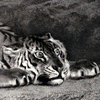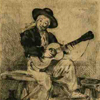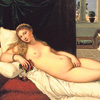Growing up alongside the Normandy coast, the sea was always a great inspiration to Monet (Cooper 292), but it is apparent that his proximity to the ocean was not his only inspiration in painting The Green Wave (Fig. 2). Whether considering Monet’s contrived treatment of a raging, stormy sea, which arouses a largely carnal reaction (as in The Green Wave), or the dazzling and painterly suggestion of a rippling and reflective watery surface as seen in later works such as his famed water lilies series, his observance of the ideals of impressionism are palpable. According to Subrahmanyan Chandrasekhar, “What emerges from the …painting is a deeply continuous nature of experience in contrast with the changing nature of the world observed at one moment (9)” Monet looks to works like Manet’s The Battle of the "Kearsarge" and the "Alabama" (1864, Philadelphia Museum of Art) (Fig. 3)and embodies these ideas of letting go of all previous conceptions of what a raging sea should look like and instead focusing on that one singular moment as his only experience with the sea. The way the palette, the motion of the waves and of the stormy sky capture the exact instant of that storm at sea in each of these paintings is exactly what Manet spoke of (note the layering of paint in the detail of The Green Wave in Fig. 4 or the motion created by the streaky lines of the ships in the background shown in Fig. 5).
Next
 Monet, Detail of The Green Wave
Monet, Detail of The Green Wave















